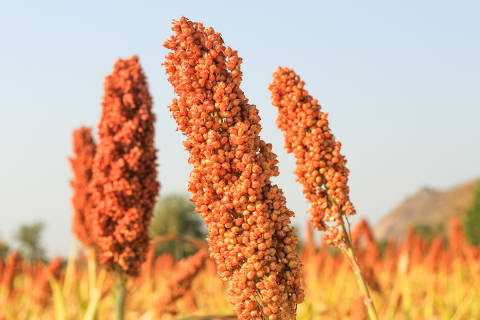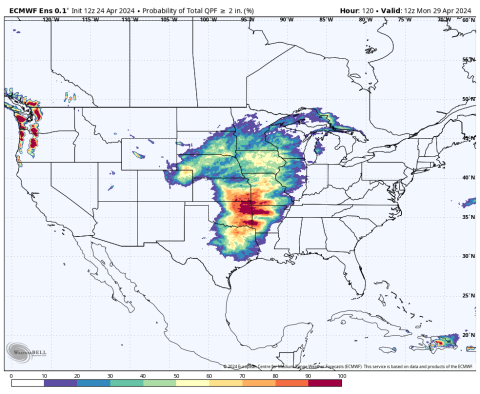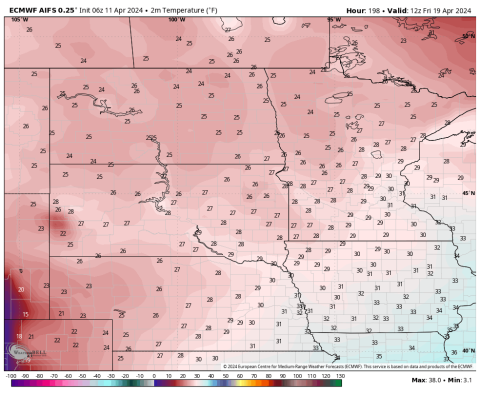
Crop Progress: Sorghum Planting Underway
April 29, 2024
Planting continues to push forward at a good pace in Nebraska, with corn, soybeans and oats still near average for this time of year, and sorghum getting started at the end of April.
Weekly Weather Outlook and Update: April 24, 2024
April 25, 2024
Planting in Nebraska may be sidelined over the weekend as rainfall is expected to continue across the region through Sunday, April 28.

Crop Progress: Soybean Planting Starts in Nebraska
April 23, 2024
Soybean planting had begun as of April 21, with just 2% of acreage completed, while corn acreage was at 6% planted.
Weekly Weather Outlook and Update: April 18, 2024
April 19, 2024
Sub-freezing temperatures are returning to much of Nebraska this Saturday morning, April 20, followed by more seasonal temperatures and two chances of precipitation throughout next week.

Weekly Weather Outlook and Update: April 11, 2024
April 12, 2024
Next week's forecast includes a risk of severe weather on Monday, followed by cooler temperatures that may lead to a frost Friday and Saturday for the majority of the state.

Crop Progress: Oats at 31% Planted, Wheat Condition Improved
April 9, 2024
Oat planting continues to surge ahead of average pace this year, and winter wheat crop conditions showed slight improvement following recent precipitation.
Weekly Weather Outlook and Update: April 4, 2024
April 5, 2024
The current outlook is favoring an early planting window in the core production areas of Nebraska, with drier conditions likely for most of the next two weeks.



